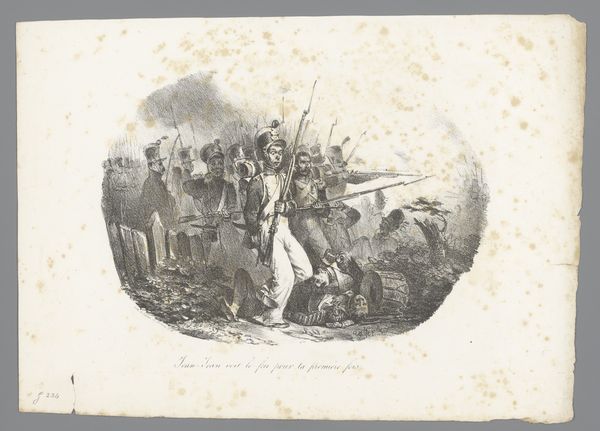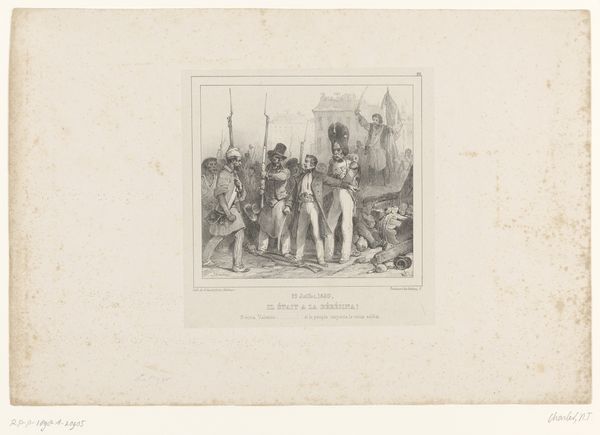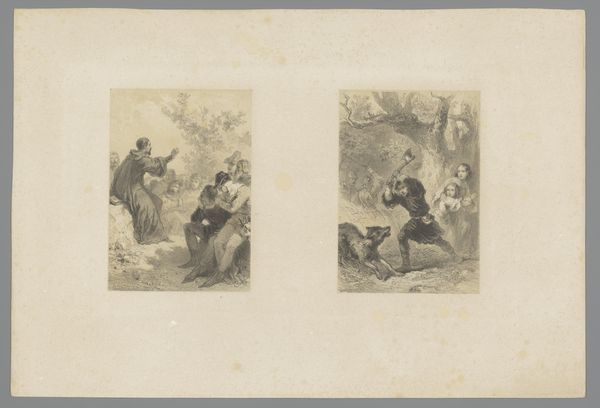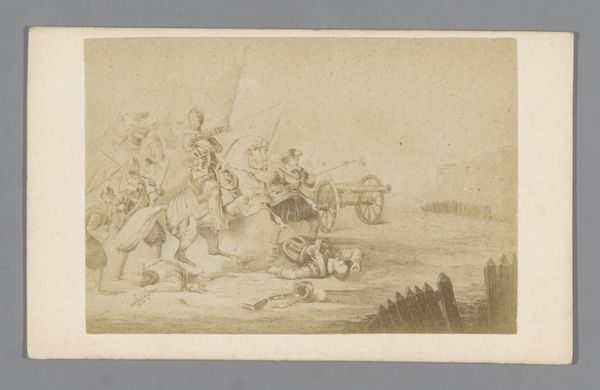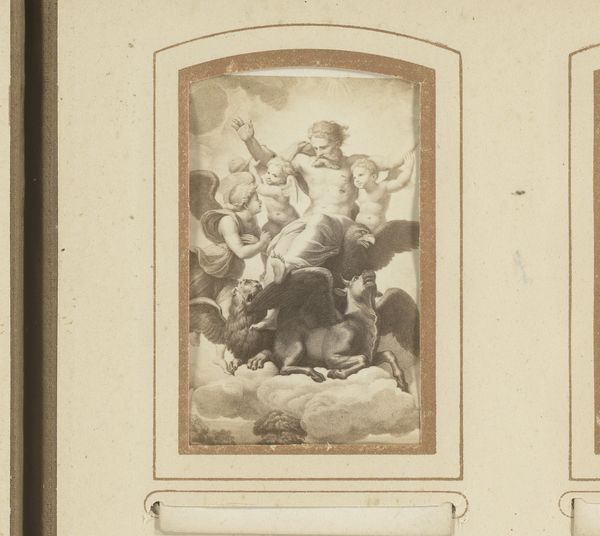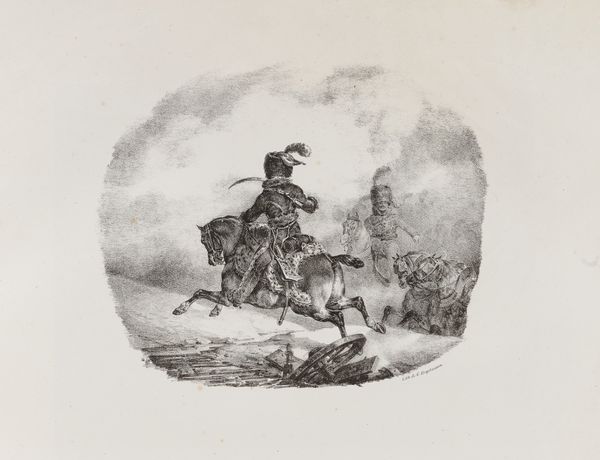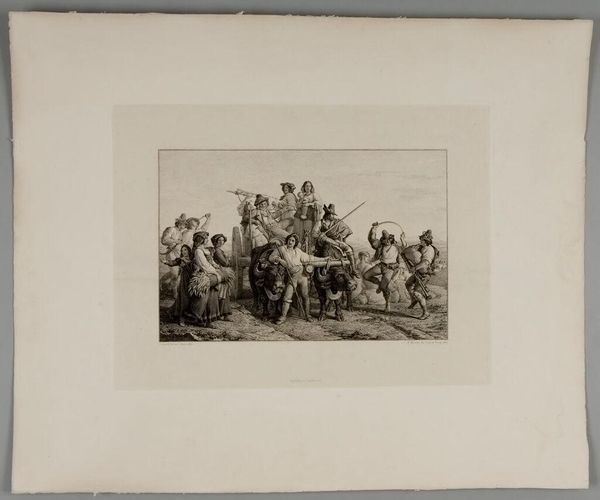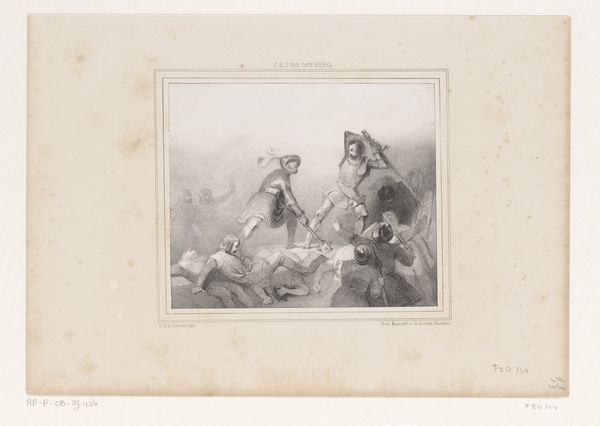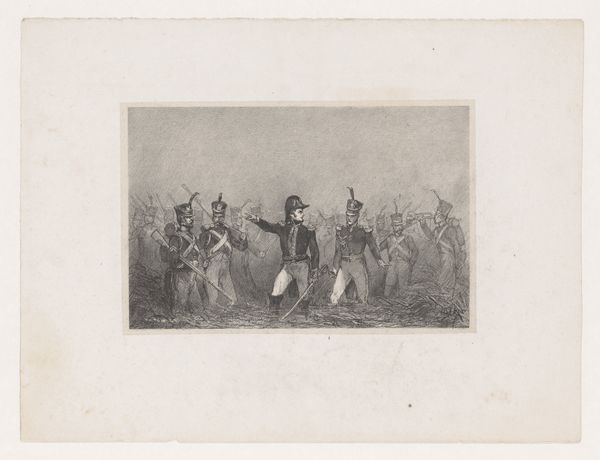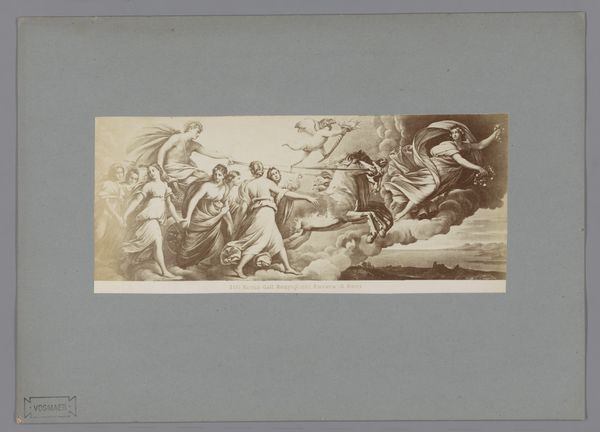
Dimensions: height 88 mm, width 177 mm
Copyright: Rijks Museum: Open Domain
Curator: Let’s examine this striking photographic print titled "Theatervoorstelling met dierfiguren voor decor," created sometime between 1855 and 1870 by Jules Marinier. It's certainly… curious, wouldn't you say? Editor: My initial reaction is surprise, a disquieting spectacle that is at once fascinating and unsettling. The high contrast in tones directs my gaze to the anthropomorphic figures dominating the frame. The stage set evokes romantic ideals that are somewhat undone by what appear to be animal heads. It all feels unresolved. Curator: Precisely. Observe the clear delineation of planes within the composition; note how Marinier constructs the scene, organizing the figures to direct the viewer's eye to what one might perceive as the 'protagonist' on either side of the stereograph card. Consider also how this very construction forces a consideration of reality vs illusion within the composition as the scene is doubled for viewing through a stereoscope. Editor: And that duality is central, isn't it? The animal-headed figures are fascinating. We see the human form presented as the location of culture and then animal heads inserted above the site of identity in our most typical encounters, raising deep questions. What statement do these figures, at once human and bestial, make about control and humanity? This feels incredibly symbolic, and the way this play-like production of figures has been created for viewing in stereo raises even more questions. Curator: Indeed. One could explore this construction via Structuralism or post-structuralism, even, to decode these symbolic representations, the performance of identity… Is this then the presentation of a metanarrative for unpacking social power and order as both animalistic and artificially produced? Is there commentary on performance, theater, spectacle? The possibilities for unpacking symbolism, or the questioning of that symbolic reading are both present. Editor: The performance and playfulness of the theater and Romantic genre scene creates the conditions to address very complex commentary, for sure. It may, too, speak to darker interpretations, and the sense of loss that comes from facing an altered reality... it resonates with certain types of anxieties, still today. Curator: It does leave us to ponder our perceptions of the past. We should move on. Editor: Agreed. The scene leaves us contemplating, well beyond this moment.
Comments
No comments
Be the first to comment and join the conversation on the ultimate creative platform.
